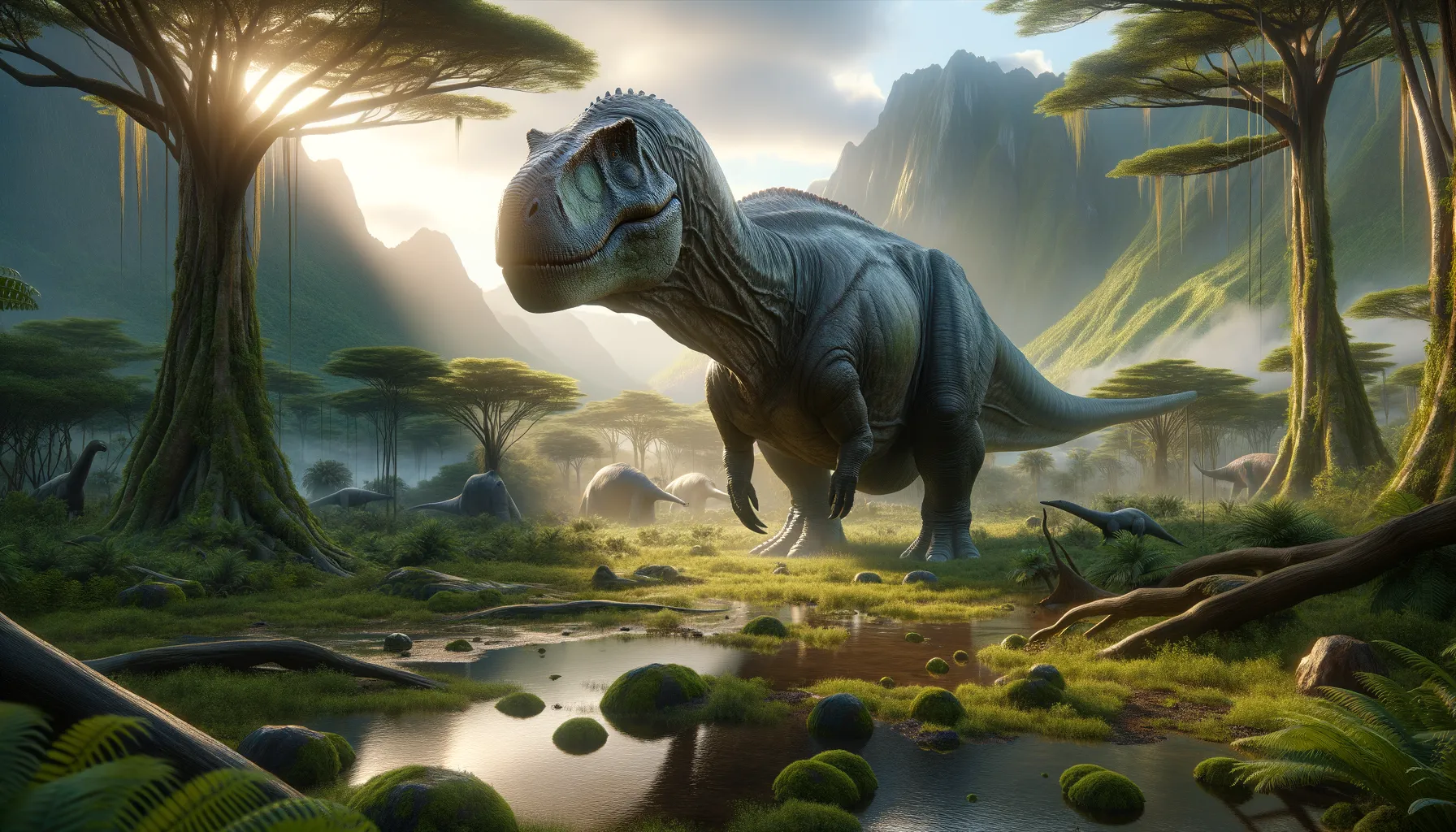
Kaijutitan
Giant of the ancient world.
Period
Cretaceous
Length
Reached up to 30 meters in length.
Height
Stood about 10 meters tall at the shoulder.
Weight
Weighed approximately 50 tons.
Kaijutitan was a gigantic sauropod dinosaur that roamed the Earth during the Late Cretaceous period. Its colossal size made it one of the largest land animals to have ever lived. Primarily known from fossils discovered in South America, this gentle giant mainly consumed plant material and lived in lush, prehistoric landscapes. Despite its size, Kaijutitan was likely a slow-moving creature, relying on its huge bulk for defense against predators.
Diet
Kaijutitan was a herbivore, feeding primarily on plants. Its long neck allowed it to reach high vegetation, while it also grazed on low-lying shrubs and ferns.
Hunting
As a herbivore, it did not hunt. It likely used its size and strength to defend against predators, rather than engage in confrontations.
Environmental challenges
Kaijutitan faced environmental challenges such as changes in vegetation and climate. Periods of drought would have required it to travel longer distances for food and water. Additionally, living in herds could lead to competition for resources during scarce times. Such challenges were common in its ever-changing, ancient ecosystem.
Speed
Slow-moving due to massive size.
Lifespan
Estimated to be around 70-80 years.
First discovery
Discovered in Argentina in 2013.
Fun Facts
- Kaijutitan lived around 125 million years ago during the Early Cretaceous period.
- This dinosaur was a massive herbivore, similar to the size of a modern-day whale.
- Its name 'Kaijutitan' means 'giant monster' inspired by the Japanese word 'Kaiju' for 'strange creature' or 'monster'.
- Kaijutitan is believed to have roamed what is now Argentina, enjoying lush forests and plentiful plants.
- The fossils of Kaijutitan were discovered in the La Rioja Province of Argentina, a region known for its rich prehistoric life.
- It belonged to the sauropod group, which is famous for having long necks and tails, small heads, and massive limbs.
- Though large and intimidating, Kaijutitan was a gentle giant, feasting on plant life flourishing in the ancient landscapes.
Growth and Development
Kaijutitan grew rapidly during the early stages of life, like many other sauropods. This growth rate offered them a size advantage against predators. Juveniles likely stayed close to adults for protection. As they matured, they would gradually disperse within herds to utilize available resources effectively.
Habitat
It inhabited vast floodplains and forests, which provided abundant plant life. The humid and warm environment supported its dietary needs. Seasonal changes in these habitats would influence migration patterns in search of food and water. These regions were rich in flora, vital for sustaining such a large creature.
Interaction with other species
Kaijutitan coexisted with other herbivores and predators of varying sizes. Its massive size possibly deterred most predators, though juveniles might have been vulnerable. Symbiotic interactions with smaller species might have occurred, possibly through stirring up the ground, which could aid seed dispersion or soil aeration.
Natural lifespan
Kaijutitan could live up to 70-80 years under natural conditions.
Reproduction
Kaijutitan reproduced by laying eggs, likely in nesting colonies for protection. Parental care may have been minimal, with hatchlings being independent shortly after birth. Large nesting grounds ensured at least some offspring survived despite high predation rates on eggs and young.
Social behaviour
Kaijutitan was likely social, living in groups or herds that provided safety in numbers. Herding facilitated finding resources and caring for the young. Communication within these groups might have been vital for migration or signaling danger.
Fossil locations
Kaijutitan fossils have been predominantly found in Argentina. These locations provide ample evidence of the rich ecosystems that existed in South America during the Late Cretaceous. Fossil discoveries continue to shed light on this period, revealing details about the giant's lifestyle and environment.
